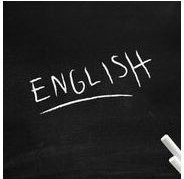What Is a Digraph? A Guide to Learning and Teaching English Digraphs Including Tips For ESL Learners
Definition of Digraph
What is a digraph? Within written language, a diagraph is defined as “a pair of characters used to write one phoneme” [1] or “a group of
two letters expressing a simple sound of speech” [2]. A digraph may also be a pair of letters that represents “a sequence of phonemes that does not correspond to the normal values of the two characters combined” [1]. (A phoneme is the smallest contrastive unit of sound in the sound system of a language.) Digraphs differ from blends. Whereas a blend is a group of letters in which each letter represents an individual sound such as the b-l sound blend in bloom or the s-t-r sound blend in street, a digraph represents only one single sound. The following sections define and explain what is a digraph in the English language.
English Digraphs
The written form of English is a language of digraphs. For example, the following chart identifies the digraph, phoneme, and an example of the most common consonant digraphs in the English language.
- Digraph – Phoneme – Example
- ch – [č]* – church
- ch – [k] – chorus
- ch – [š] – machine
- ck – [k] – back
- dg – [ĵ] – grudge
- gh – [f] – cough
- gh – [g] – ghost
- gn – [n] – gnome
- kn – [n] – knife
- lk – [k] – walk
- mn – [n] – mnemonic
- ng – [ŋ] – ring
- ph – [f] – telephone
- pn – [n] – pneumonia
- qu – [kw] – queen
- rh – [r] – rhetoric
- sh – [š] – shush
- th – [ð] – those
- th – [θ] – thanks
- th – [t] – Thailand
- wh – [w] – whether
- wr – [r] – write
Written English is also a language of vowel diagraphs. The following chart identifies the digraph, phoneme, and an example of the most common vowel digraphs in the English language.
- Digraph – Phoneme – Example
- ai – [e] – rain
- au – [ɔ] – caught
- ea – [i] – seat
- ee – [i] – greet
- ei – [i] – deceive
- ei – [e] – neighbor
- ie – [i] – sieve
- oa – [o] – boat
- oo – [u] – boot
- oo – [ʊ] – book
- ou – [ɔ] – ought
- ou – [u] – through
- ou – [ʊ] – could
*The letters in brackets are the sounds written in the International Phonetic Alphabet [3].
Digraph Teaching Ideas
English language learners often find the many digraphs of English the most difficult aspect of learning to read and write the language. Use one or more of the following activities to teach ESL students what is a digraph:
-
Create digraph flashcards. Use words both known and unknown to the English language learners. Choose words appropriate to the level of the students.
-
Teach word origins. Although a one-to-one letter-to-sound rule does not exist in the English spelling system, there are many predictable correspondences and patterns in English orthography based on word origin. For example, words of Greek origin usually use the ph digraph to represent the [f] phoneme. Learning about word origin will help English language learners better understand the connection between letters and sounds in English.
-
Use rhyming games to teach digraphs. Pair a known word with an unknown word.
The definition of digraph is a pair of letters used to represent one phoneme in the written form of a language. Learning what is a digraph is made easy with this guide to English digraphs, which includes some teaching ideas.
References
- Digraph (orthography): https://en.wikipedia.org/wiki/Digraph_%28orthography%29
- digraph, n./1 Second edition, 1989; online version November 2010. https://www.oed.com:80/Entry/52666; accessed 21 December 2010. Earlier version first published in New English Dictionary, 1896.
- International Phonetic Alphabet (IPA): https://www.omniglot.com/writing/ipa.htm
